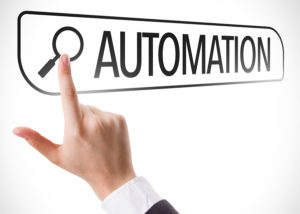Why Your Business Needs an Automated Sales Tax System
Here’s an eye-opener: By various estimates, there are between 7,500 and 14,000 different authorities that impose a sales tax in the United States.
If you feel a sense of dread upon reading that statistic, you’re not alone!
How can a business that sells items in multiple states and jurisdictions hope to keep track of so many different tax rates? In addition to charging the correct tax rates on sales, determining the taxability and sourcing rules for each jurisdiction is even more challenging. Fortunately, there is an answer.

Tax Automation Is Better Than Ever
There are a large number of automated sales tax solutions now available on the market. It wasn’t always this way. If you’re in the market for one of these systems, now is a good time since there are so many options available. The question then becomes: Would your business benefit from implementing an automated sales tax system?
To answer that question, here are three items to consider:
- For businesses that sell items in multiple jurisdictions, it is critical to implement a technology solution to accurately manage sales and use tax functions. Trying to stay on top of every jurisdiction’s tax rate changes and other compliance issues can be nearly impossible without such a system.
- A properly implemented and maintained automated tax system will help reduce errors, increase employee productivity, and help businesses avoid audit fines and penalties and the labor costs to fix mistakes found in an audit
- An automated tax system helps reduce human error due to the quantity and variety of people involved in making sales and use tax decisions within a company.
Those are some compelling reasons to consider implementing an automated tax solution. Yet, despite all the resources that are available today, many companies still use spreadsheets and manual entry to manage their sales and use taxes. Depending on your company’s footprint and the quality of the work being done, this could lead to big problems.
Is Your Current Automation Fully Serving You?
On the other hand, there are companies that do have an automated tax system in place, but it’s not providing the desired results. In this case, important things can fall through the cracks, which government audits can bring to the company’s attention after it’s too late to collect taxes from customers.
Whether you are looking to implement an automated tax solution for the first time or your company already has a solution in place, it is absolutely critical to follow the best practices for implementing one of these systems. If you’re going to invest the time and money in a tax system, make sure you’re doing it right so you get the most out of it.
Businesses that fall under any of the following situations would benefit greatly from learning the best practices in tax system implementation:
- Implementing an automated system for the first time
- Changing systems – whether it’s the financial system or the tax engine
- Upgrading an existing tax system to a different version or platform
- Merging data to another system
- Expanding into a new market or geographic area
For those businesses implementing an automated system for the first time, knowing how to choose the system that is right for your company is the first important step. Criteria such as your invoicing system, transaction volume, nexus profile, industry and the complexity of the taxability of your products and services – along with your budget – all come into play in determining the best system for your needs.
Once the system has been selected, having a comprehensive project plan and implementing the system effectively is the other key to success.
Don’t Assume Your Automation is Fine
To be sure, implementing a tax automation system is no small task, but it is well worth the investment of time, money and effort when an effective system is in place. The right tax system, along with the right implementation process, can bring about greater efficiency and a substantial return on investment.
Even with an understanding of the huge benefits that can come with an automated tax system, the scope of the project overwhelms many people and keeps them from moving forward with such a project. There is a good reason why: implementing an automated tax system is not part of the day-to-day responsibilities of a sales tax or IT professional (or most other people for that matter!).
For that reason, attempting to accomplish a project of this magnitude and importance without someone with significant experience can add risk to the project. Fortunately, there are experts who can guide companies through this transition. Finding the right partner – one who knows the business, the industry, the systems, and is willing to provide the needed assistance – is key to ensuring that an implementation project succeeds. And unfortunately, this may not be the technician that comes along with the automation system.
It’s no secret that states are getting more aggressive in collecting sales taxes. With the uncertainty regarding what the Supreme Court will do in its review of South Dakota v. Wayfair, businesses without an automated tax system should strongly consider whether such a system is right for them. And companies who already have an automated tax system in place must ensure that their system is working efficiently and effectively to avoid hefty fines.
Now is the time for companies to evaluate their systems and decide whether a system implementation or improvements to their existing system are necessary. Not doing so is costing you more work than is necessary and could lead to disastrous results down the line.
Looking for more information on implementing an automated sales tax system? Check out these additional resources:
- Download the Best Practices in Transaction Tax Systems Implementation article
- Download the free No Excuses: Automation Advances Make Sales Tax Collection Easier for Everyone article
 About the Author:
About the Author: